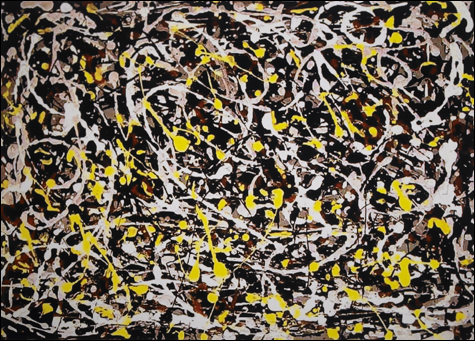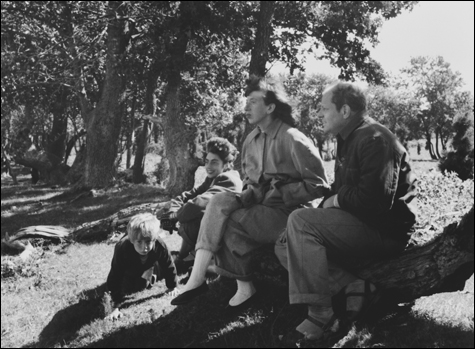
|
In 2002, the year after his mother died, as Alex Matter tells it, he found a brown paper package in his father’s storage locker on Long Island. Inside was a pile of small paintings that resembled the work of Jackson Pollock. A note on the outside said that’s just what they were.
Matter’s account is plausible. His parents hung out frequently with Pollock and Pollock’s wife, Lee Krasner, at their homes and studios on Manhattan and Long Island. Alex’s father, Herbert, who died in 1984, was said to be making small purchases of Pollocks by 1944. Alex Matter reported that though some paintings had disintegrated inside the package, 28 had survived. He added that he’d found six more Pollock-style paintings among his dad’s effects.
The note, said to be in Herbert’s hand, identified the hoard as “Pollock (1946-49)/Tudor City (1940-1949)/32 Jackson experimental/works (gift + purchase)/ Bad condition./ 4 both sides. All/drawing boards./Robi paints./MacDougal Alley 1958.” If they really are Pollocks from 1946 to 1949, they represent Pollock very early in the development of his drip technique, when he was experimenting in the run-up to his breakthrough poured paintings of 1947. It was an astonishing find, one that could be worth millions. So people began asking questions.
More than 20 of these “Pollocks” appear in “Pollock Matters,” which opened Saturday at Boston College’s McMullen Museum of Art. Working with Boston College art historian Claude Cernuschi, organizer Ellen Landau, a Pollock scholar at Case Western Reserve University, has assembled more than 170 artworks and ephemera to make the groundbreaking argument that Matter was a key inspiration for Pollock’s signature poured paintings.

A PERFECT COMMUNION? Alex Matter, Mercedes Matter, Lee Krasner, and Jackson Pollock, in a
1948 photo by Herbert Matter. |
This exhibit also summarizes materials analysis of the paintings by the Williamstown firm Orion Analytical (whose findings have not been fully released) and scientists led by Richard Newman at the Museum of Fine Arts. Orion concluded that 16 of 23 Alex Matter paintings contained materials patented after Pollock’s death. (He flipped his convertible near his Long Island home in 1956.) The MFA team studied six of the same paintings and concurred. They concluded that one of three previously unexamined paintings included a red pigment patented by a Swiss firm in 1983. A January Harvard University Art Museums study stated that the three “Pollocks” it examined contained materials patented after Pollock’s death.This news casts suspicions on the package’s note. Why would Pollock’s close pal attribute 32 paintings to his friend? And add the years they were made? And where and with what they were made? These extensive details suggest that if the “Pollocks” aren’t real, then this may not be an innocent mix-up but a fraud.
“Pollock Matters” is a story of a web of relationships in the New York art world of the 1930s and ’40s. Herbert Matter was a crackerjack Swiss modernist designer and photographer who emigrated to New York in 1935. The painter Fernand Léger introduced him to the painter Jeanne (Mercedes) Carles in 1938. Krasner and the painter Hans Hofmann attended their 1941 wedding. Krasner and Mercedes Matter both studied with Hofmann, but they didn’t meet until they were both arrested at a 1936 protest.